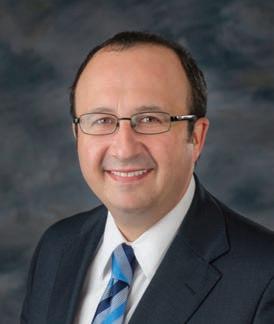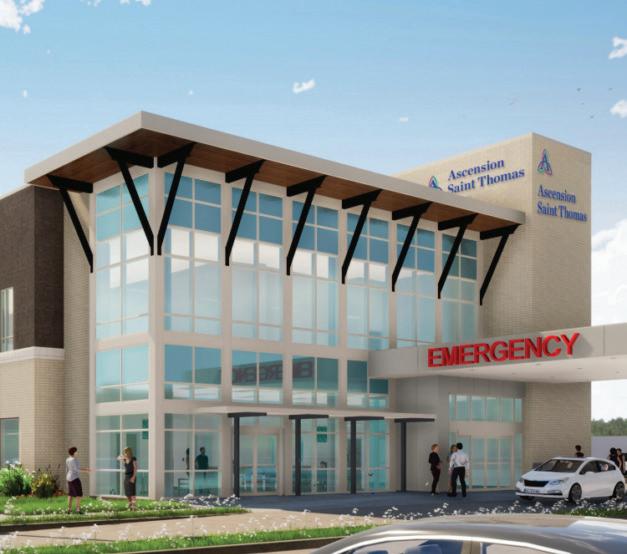
3 minute read
CHALLENGED YET OPPORTUNISTIC
The top challenges and opportunities facing health care
COVID has made clearer some of the strategies for long-term success
Advertisement
BY VIN PHAN AND HERMAN WILLIAMS
he U.S. health care system un-
T derwent rapid change this year as the COVID-19 pandemic swept through the nation. As a result, challenges abound for providers, challenges that could worsen with a second COVID wave. As Dr. Je Balser from Vanderbilt University Medical Center recently wrote, another surge is headed for Tennessee. is surge could be greater and Middle Tennessee’s health care system could become overwhelmed.
Beyond the pandemic, the health care landscape is poised to further shift due to accelerated digital transformation, policy changes from the upcoming presidential election, the potential repeal of the A ordable Care Act, changing regulations and more. Accounting for these upcoming shifts while facing the challenges introduced by the pandemic is no small feat.
As health care organizations chart their paths forward, they must rst understand the challenges the system is facing. Only then can they identify the opportunities available to optimize their organizations and withstand the oncoming winds of the next surge. We view the top three challenges as being: • Access — Lack of access to health care has been exacerbated during COVID. While telehealth implementation became the saving grace of many providers, areas without broadband internet access — such as many rural communities — weren’t able to capitalize on the bene ts. In addition, concerns have arisen regarding equity of care, with certain demographic groups and regions having access to fewer resources than others. • Patient safety — Ensuring patient safety during the pandemic is challenging, especially in facilities treating a signi cant number of COVID patients. Many patients have come to see health care facilities as potential hotbeds of infection. As a result, patient volumes have been lower, cutting into revenue. Remote care solutions can also compromise patient safety when they increase the risk of misdiagnosis or are vulnerable to cybersecurity threats. • Financial stability — e pandemic revealed signi cant nancial vulnerabilities in the U.S. health care system. Federal funding served as the bastion keeping much of the system a oat during the worst of the shutdowns. It was a bandage solution to a serious wound. e pandemic also revealed how the fragmentation of the health care system threatens the nancial viability of many organizations. Small, independent health care facilities struggled to access the same resources as larger health care systems.
As these challenges continue to increase in importance, they can feel overwhelming to health care leaders. However, they also give rise to opportunities that will eventually make our health care system stronger. ere are three major opportunities that organizations can leverage to solve for the challenges introduced by the pandemic: • Telehealth — By partnering with internet providers to bring broadband access to rural areas, bolstering cybersecurity protections and hybridizing telehealth services with in-person visits, telehealth can make health care more accessible to the patient population while providing an additional revenue stream for providers. Payers will have to continue to reimburse these services so that this option remains viable for patients. • Strategic partnerships — Joint ventures can expand areas of access and resources. Mergers and acquisitions can also consolidate a fragmented health care system, allowing smaller organizations access to greater resources and nancial stability. Mental and behavioral health facilities, hospitals and physician practices are ripe for investment and partnership opportunities. • Value-based care models — ese approaches can improve patient safety and quality of care while bolstering the nancial stabil-
Vin Phan
Herman Williams

ity of health care facilities. Organizations that employed value-based care models were better positioned to survive the strains of the pandemic than those that relied on fee-for-service reimbursement models, which are dependent on high patient volumes. Moving forward, value-based care models will be an integral part of building a nancially secure, high-performing facility. ese opportunities are not perfect solutions. Telehealth implementation may be challenged by limited provider adoption and continued payer support after the pandemic. Shifting reimbursement regulations may complicate the adoption of value-based care models. And increased consolidation of the health care industry could reduce competition. ey are, however, vital tools to help stabilize health care organizations and position them to outlast the impact of the pandemic.
Vin Phan is a partner in BDO’s Healthcare Transaction Advisory Services group. Herman Williams is a managing director and chief physician executive of BDO Healthcare Advisory. vphan@bdo.com and hjwilliams@bdo.com










